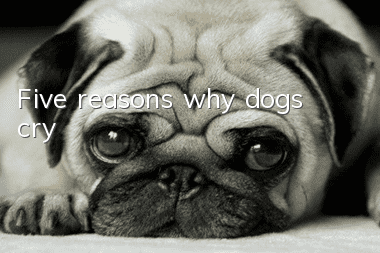Dogs can’t just chew bones if they want to, just look at the consequences!

Since we were born, we have believed that there are a few immutable iron laws in this world. For example, dogs love to chew bones, which is as common as the sun rising in the east.
To talk about the reasons why bones attract dogs, we can also list one or two. For example, there is delicious meat on the bones, and the bones also contain some calcium, which can be absorbed by dogs and promote growth. However...
After giving bones to dogs, I found that various accidents occurred frequently? Not only did they get stuck in the throat, but they also punctured the intestines and perforated the stomach?
Oh my God, why do bones suddenly become so dangerous!!
What are the harms of dogs eating bones?
1. Excessive trace elements
Although bones are rich in calcium, there is also a considerable amount of magnesium. Excessive magnesium will absorb a large amount of water in the pet's intestines, causing constipation in pets. At the same time, too much magnesium will be excreted in the urine in the form of magnesium ammonium phosphate, but too much magnesium ammonium phosphate crystals in the urine can seriously block the urethra, resulting in urinary bladder accumulation. When magnesium is excessive, pets may also experience dangers such as coma, diarrhea, decreased feed intake, severe anorexia, and even death.
2. Scratch the pipe wall
In addition, when pets chew bones, they often crack the bones, especially the smaller chicken bones, fish bones, etc., which can easily form sharp thorns, which can pierce the pet's throat or Get stuck in the pet's esophagus, causing harm to the pet. Even relatively large beef and pig bones can damage your pet’s digestive tract, and too many small bone fragments stuck together can hinder the normal peristalsis of your pet’s intestines and cause constipation.
So, dogs can’t be fed bones?
Of course not, bones are divided into several categories. Among them, small joint bones of poultry should not be fed: including neck bones and head bones of chickens, ducks, and pigeons. These bones are relatively small and can easily break into bone fragments, scratching the dog's throat and stomach and causing severe bleeding.
What bones can be fed to dogs?
Of course, those are the big bones that dogs can chew but cannot swallow. Usually this kind of bone is relatively hard, large in size, relatively rounded in shape, and has no corners. This can effectively prevent dogs from biting it into pieces and avoid the danger of getting stuck in the throat.
In addition, pet merchants have also developed some bone toys. The main benefit of feeding these bones is that they can help dogs clean their mouths to a certain extent. Dogs can chew the bones to clean their teeth. In addition, providing dogs with such bones during the period of teeth replacement can effectively help them grind their teeth, thereby preventing dogs from chewing on furniture to achieve the effect of grinding their teeth.
So, dogs don’t just want to gnaw bones, they can gnaw them if they want....In order to avoid accidents, the master must not be careless!
- Daily care for golden retrievers
- How to train a German Shepherd at three months? The best time to train a German Shepherd!
- What should I do if my Chihuahua vomits after eating too much?
- Can a pregnant woman get rabies vaccine if she is bitten by a pet?
- How to train a dog to obey commands like a working dog?
- What will happen if your dog eats onions?
- What are the Samoyed beauty and styling care methods? What should you pay attention to when doing beauty treatments?
- How to recover from nerve damage in dogs
- What do dogs pay attention to in spring?
- Dog's hair is dry and itchy



